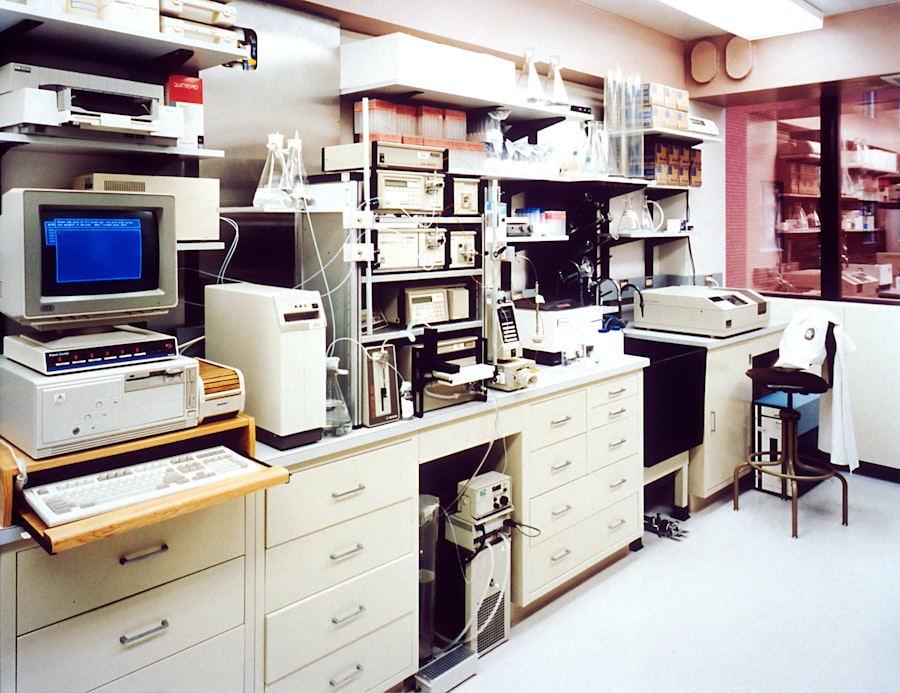Clinical Data Management Systems (CDMS) are pivotal in the realm of clinical research, serving as the backbone for data collection, management, and analysis throughout the lifecycle of clinical trials. These systems are designed to facilitate the efficient handling of vast amounts of data generated during clinical studies, ensuring that the information is accurate, secure, and readily accessible for analysis. The evolution of CDMS has been driven by the increasing complexity of clinical trials, the need for regulatory compliance, and the demand for real-time data access.
As clinical trials become more intricate, with multi-site studies and diverse patient populations, the role of CDMS has expanded significantly. The importance of CDMS cannot be overstated; they not only streamline the data management process but also enhance the overall quality of clinical research. By automating data entry and providing robust tools for data validation and reporting, CDMS reduce the likelihood of human error and improve the efficiency of data handling.
Furthermore, these systems support various types of clinical trials, from Phase I safety studies to large-scale Phase III efficacy trials, making them versatile tools in the research arsenal. As the healthcare landscape continues to evolve, understanding the functionalities and advantages of CDMS becomes essential for researchers, sponsors, and regulatory bodies alike.
Key Takeaways
- CDMS enhances accuracy and efficiency in clinical trial data management.
- Key features include real-time data entry, validation, and audit trails.
- Integrating CDMS with EHR systems improves data consistency and accessibility.
- Ensuring data quality involves strict validation protocols and regular monitoring.
- Future CDMS trends focus on AI integration and advanced analytics for better insights.
Benefits of Implementing CDMS in Clinical Trials
The implementation of a Clinical Data Management System offers numerous benefits that can significantly enhance the efficiency and effectiveness of clinical trials. One of the primary advantages is the reduction in time and costs associated with data management. Traditional methods of data collection often involve manual entry and paper-based processes, which are not only time-consuming but also prone to errors.
By utilizing a CDMS, organizations can automate many aspects of data entry and management, leading to faster turnaround times for data analysis and reporting. This efficiency can be particularly crucial in time-sensitive studies where rapid results are necessary for decision-making. Moreover, CDMS enhances collaboration among stakeholders involved in clinical trials.
With centralized data storage and access, researchers, sponsors, and regulatory bodies can easily share information and insights. This collaborative environment fosters transparency and facilitates communication, which is vital for addressing any issues that may arise during a trial. Additionally, many CDMS platforms offer real-time monitoring capabilities, allowing stakeholders to track progress and make informed decisions based on up-to-date information.
This level of accessibility not only improves operational efficiency but also strengthens the integrity of the research process.
Key Features of a CDMS

A robust Clinical Data Management System is characterized by several key features that contribute to its effectiveness in managing clinical trial data. One of the most critical features is electronic data capture (EDC), which allows for the direct input of data from clinical sites into a centralized database. EDC minimizes transcription errors associated with paper forms and enables real-time data access for monitoring and analysis.
Additionally, many CDMS platforms incorporate user-friendly interfaces that facilitate ease of use for clinical staff, reducing training time and enhancing user adoption. Another essential feature is data validation and cleaning tools. These functionalities ensure that the data collected is accurate and consistent by applying predefined rules and checks during the data entry process.
For instance, a CDMS may flag outliers or inconsistencies in patient data, prompting users to review and correct any discrepancies before finalizing the dataset. Furthermore, comprehensive reporting capabilities are integral to a CDMS, allowing researchers to generate detailed reports on study progress, patient demographics, and adverse events. These reports are invaluable for regulatory submissions and can aid in decision-making throughout the trial.
Best Practices for Streamlining Data Entry and Collection
| Best Practice | Description | Key Metrics | Expected Impact |
|---|---|---|---|
| Use of Standardized Forms | Implement uniform data entry forms to reduce errors and improve consistency. | Error rate reduction (%), Form completion time (minutes) | Decrease data entry errors by up to 30%, reduce completion time by 20% |
| Automated Data Validation | Incorporate real-time validation rules to catch errors during entry. | Validation error rate, Data accuracy improvement (%) | Improve data accuracy by 25%, reduce post-entry corrections |
| Use of Drop-down Menus and Auto-fill | Minimize manual typing by providing selectable options and auto-completion. | Data entry speed (entries per hour), Typing errors (%) | Increase speed by 15%, reduce typing errors by 40% |
| Mobile Data Collection Tools | Enable data entry via mobile devices for field data collection. | Data collection time, Data submission latency | Reduce collection time by 35%, faster data availability |
| Training and User Support | Provide comprehensive training and ongoing support for data entry personnel. | User error rate, Training hours per employee | Lower error rates by 20%, improve user confidence |
| Integration with Existing Systems | Connect data entry tools with databases and software to avoid duplicate entry. | Duplicate entry rate, Data synchronization time | Eliminate duplicate entries, streamline workflows |
| Regular Data Audits | Conduct periodic reviews to identify and correct data inconsistencies. | Audit frequency, Data correction rate | Maintain high data quality, reduce long-term errors |
To maximize the benefits of a Clinical Data Management System, it is essential to adopt best practices for data entry and collection. One effective strategy is to standardize data collection processes across all sites involved in a clinical trial. By establishing clear protocols for how data should be entered and what formats should be used, organizations can minimize variability and ensure consistency in the dataset.
This standardization is particularly important in multi-site studies where different teams may have varying levels of experience with data entry. Training is another critical component in streamlining data entry. Providing comprehensive training sessions for all personnel involved in data collection can significantly reduce errors and improve overall efficiency.
Training should cover not only how to use the CDMS but also the importance of accurate data entry and adherence to study protocols. Additionally, implementing regular audits and feedback mechanisms can help identify areas for improvement in data collection practices. By fostering a culture of accountability and continuous improvement, organizations can enhance the quality of their clinical trial data.
Ensuring Data Quality and Integrity with CDMS
Data quality and integrity are paramount in clinical research, as they directly impact the validity of study results. A well-implemented Clinical Data Management System plays a crucial role in safeguarding these aspects through various mechanisms. One fundamental approach is through automated data validation checks that are built into the system.
These checks can identify inconsistencies or errors at the point of entry, allowing researchers to address issues immediately rather than after data collection has concluded. Moreover, audit trails are an essential feature of CDMS that contribute to maintaining data integrity. An audit trail records all changes made to the dataset, including who made the change, when it was made, and what was altered.
This transparency is vital for regulatory compliance and provides a clear history of data handling throughout the trial. Additionally, implementing role-based access controls ensures that only authorized personnel can modify or access sensitive data, further protecting against unauthorized changes or breaches.
Integrating CDMS with Electronic Health Records (EHR)

The integration of Clinical Data Management Systems with Electronic Health Records (EHR) represents a significant advancement in clinical research capabilities. EHRs contain comprehensive patient information that can enhance clinical trial data by providing context and background on participants’ health histories. By integrating these two systems, researchers can streamline patient recruitment processes, as they can easily identify eligible candidates based on their medical records.
Furthermore, this integration facilitates real-time data exchange between clinical sites and research databases. For instance, when a patient visits a healthcare provider participating in a trial, relevant health information can be automatically pulled into the CDMS without requiring manual entry. This not only saves time but also reduces the risk of errors associated with duplicate data entry.
Additionally, having access to EHR data allows researchers to conduct more thorough analyses by correlating clinical trial outcomes with patients’ historical health information.
Regulatory Compliance and CDMS
Regulatory compliance is a critical consideration in clinical trials, as adherence to guidelines set forth by agencies such as the Food and Drug Administration (FDA) or European Medicines Agency (EMA) is essential for ensuring patient safety and data integrity. A well-designed Clinical Data Management System can significantly aid organizations in meeting these regulatory requirements. Many CDMS platforms are built with compliance in mind, incorporating features that align with Good Clinical Practice (GCP) guidelines.
For example, CDMS often include functionalities for electronic signatures that comply with 21 CFR Part 11 regulations in the United States. This ensures that all electronic records are trustworthy and verifiable while maintaining an audit trail that documents all actions taken within the system. Additionally, many CDMS provide tools for generating reports that facilitate regulatory submissions by summarizing key study findings and demonstrating compliance with required protocols.
Future Trends in CDMS Technology
As technology continues to advance at a rapid pace, several trends are emerging that will shape the future of Clinical Data Management Systems. One notable trend is the increasing use of artificial intelligence (AI) and machine learning (ML) algorithms to enhance data analysis capabilities within CDMS platforms. These technologies can automate complex analytical tasks, identify patterns within large datasets, and even predict outcomes based on historical data trends.
As AI becomes more integrated into CDMS, researchers will be able to derive insights more quickly and accurately than ever before. Another significant trend is the growing emphasis on patient-centric approaches in clinical trials. This shift is driving innovations in how data is collected from patients, including mobile health applications and wearable devices that monitor health metrics in real-time.
Integrating these technologies with CDMS will allow researchers to gather more comprehensive datasets that reflect patients’ experiences outside traditional clinical settings. As patient engagement becomes increasingly important in clinical research, CDMS will need to adapt to accommodate these new methods of data collection while ensuring compliance with privacy regulations. In conclusion, Clinical Data Management Systems are essential tools that enhance the efficiency, quality, and integrity of clinical trials.
As technology continues to evolve, so too will the capabilities of CDMS, paving the way for more innovative approaches to clinical research that prioritize patient engagement and leverage advanced analytical techniques.




